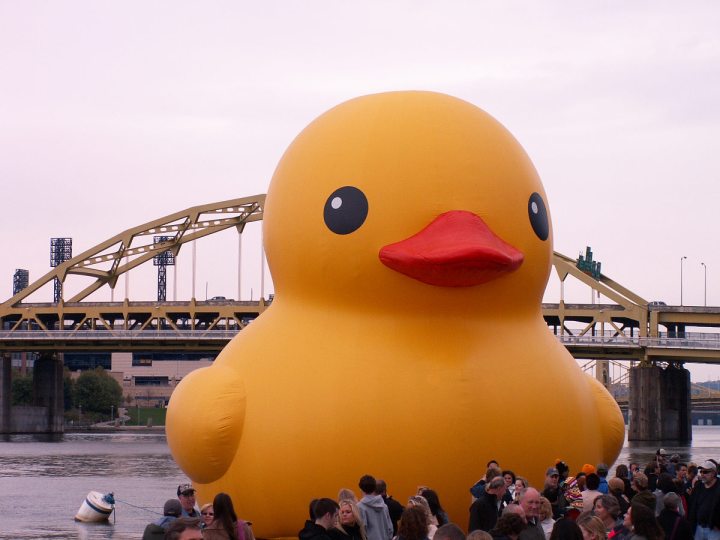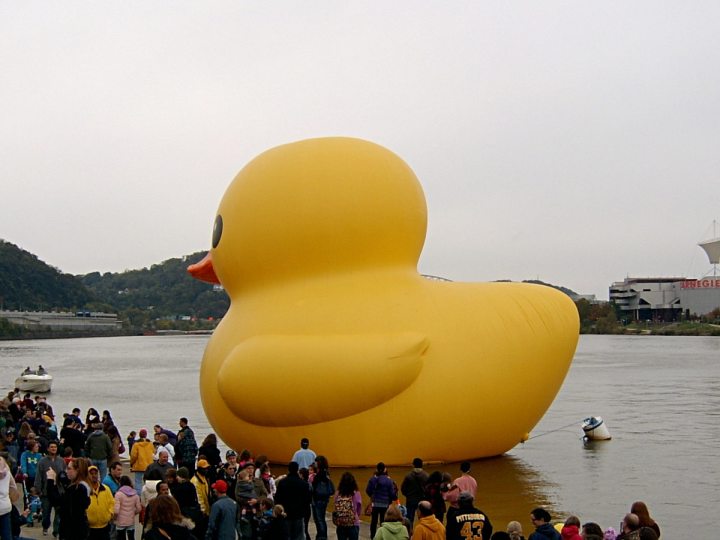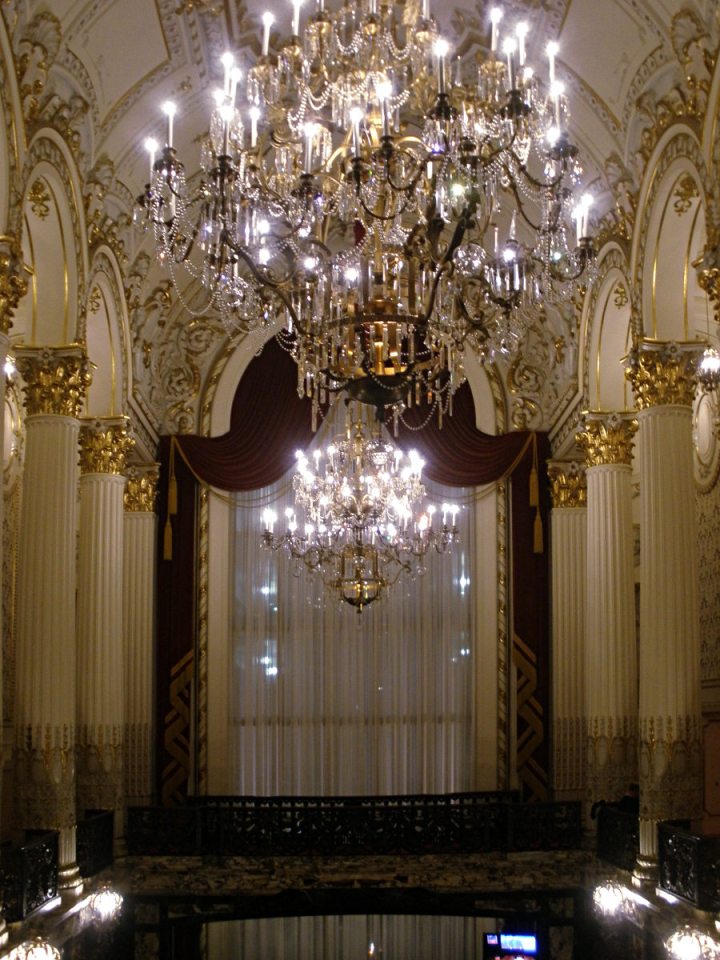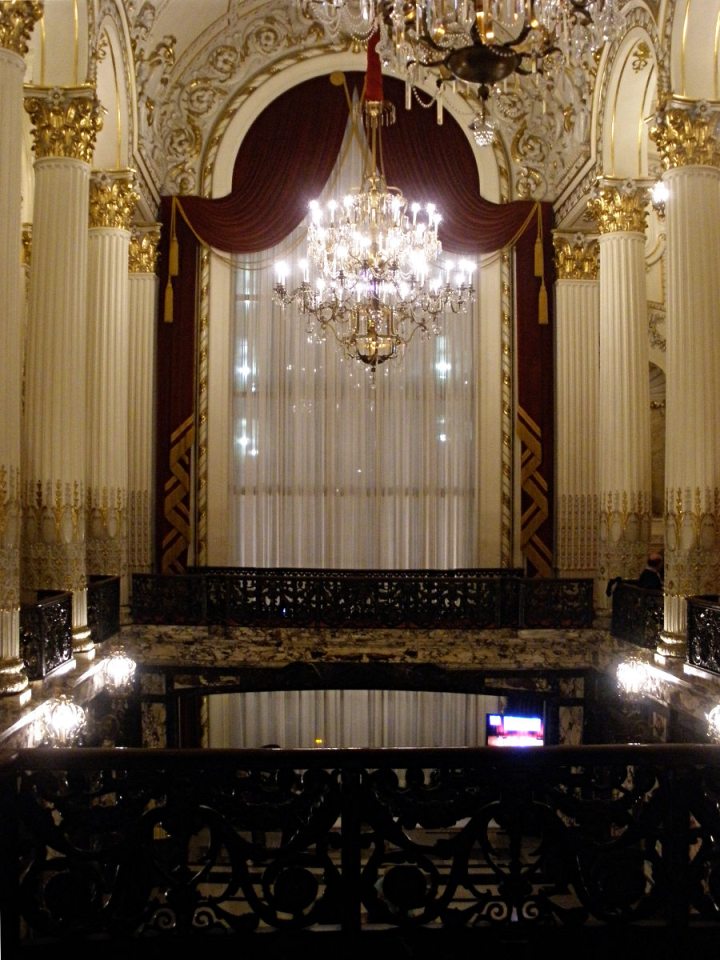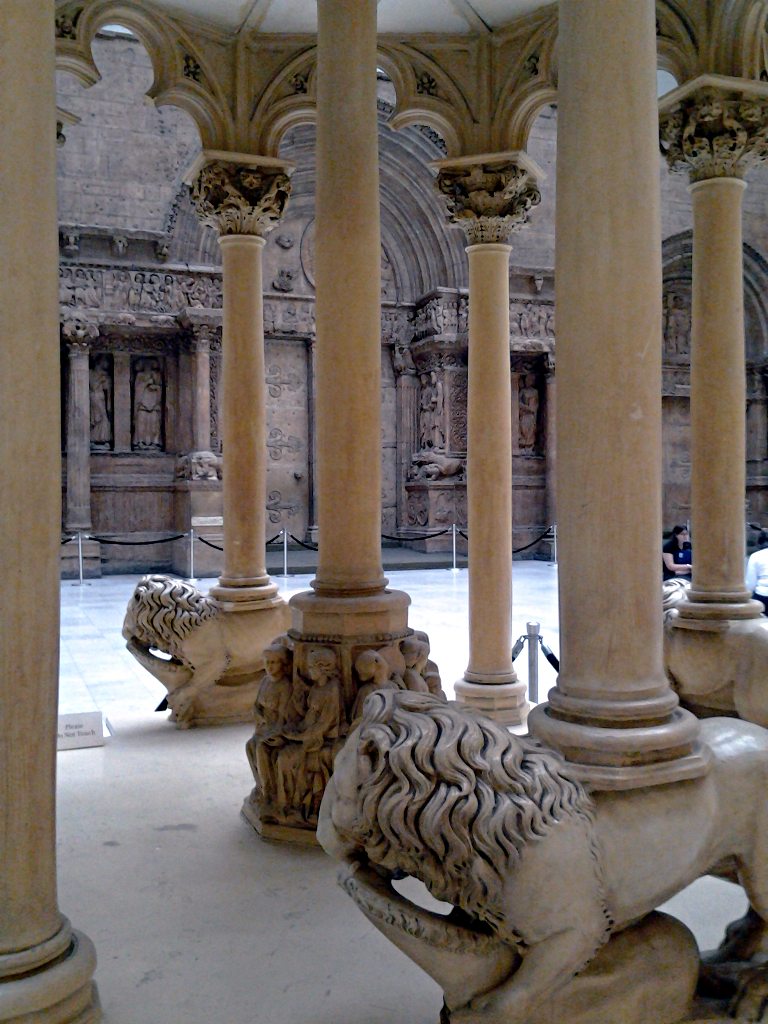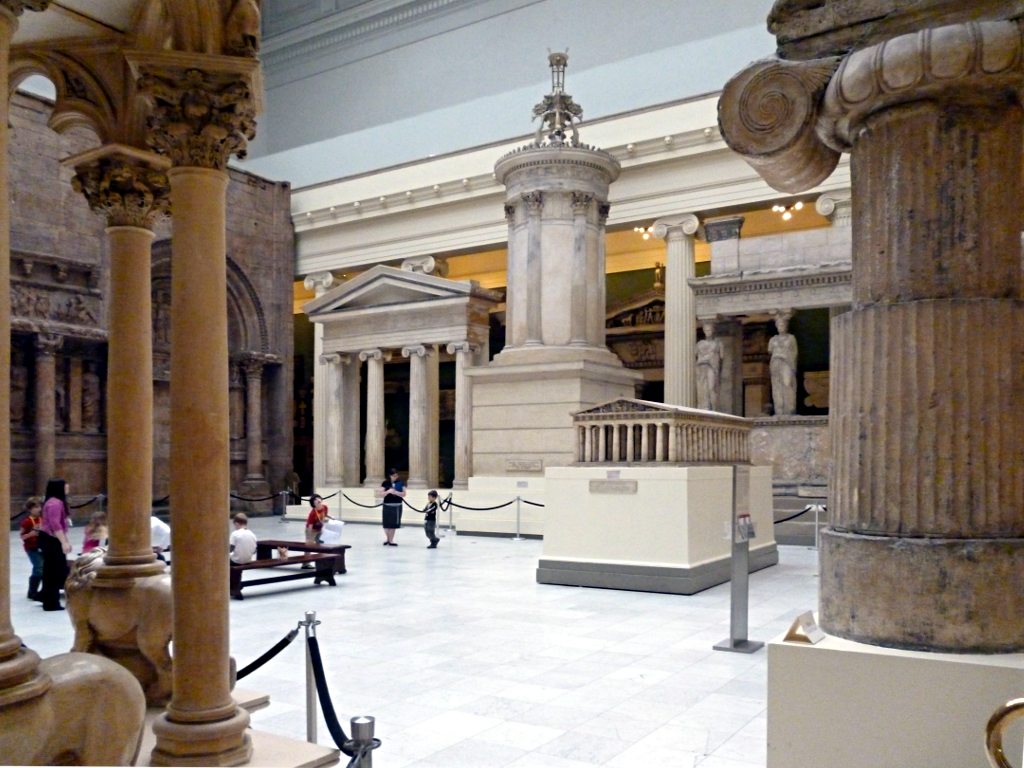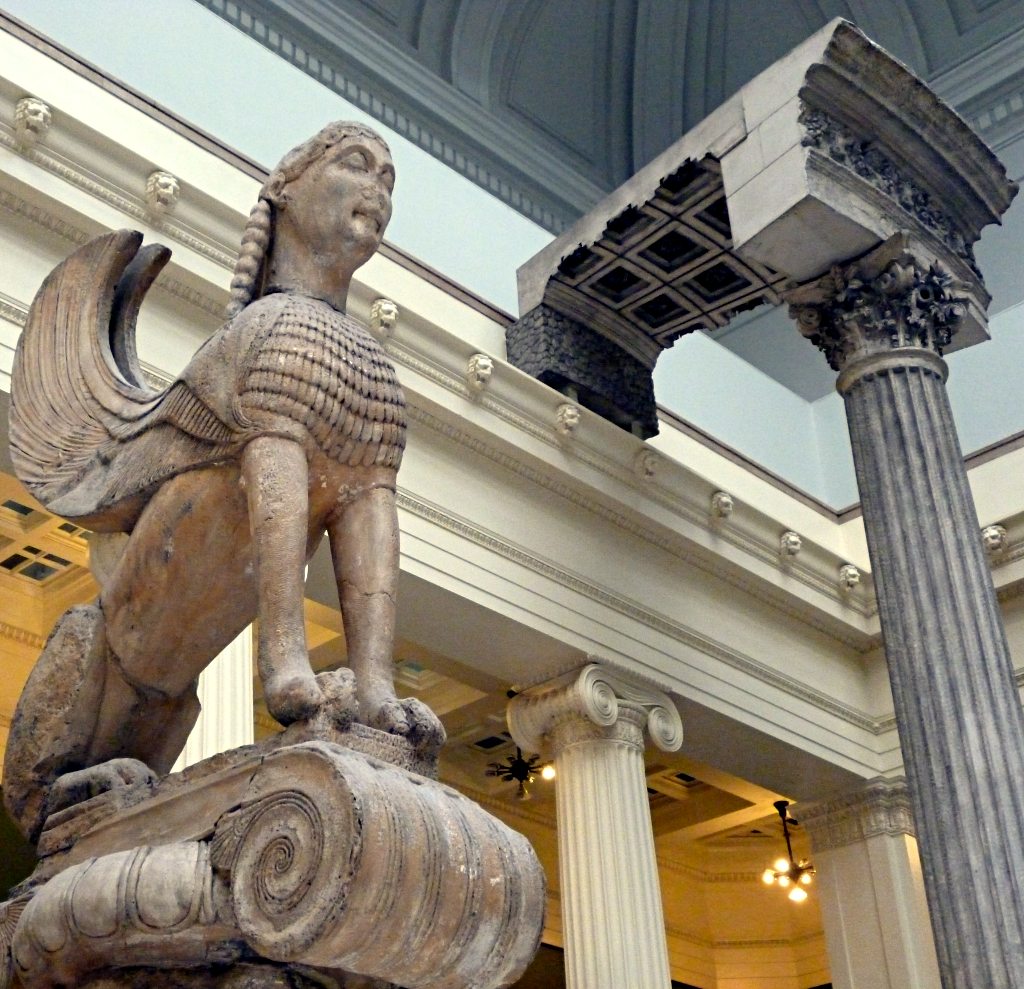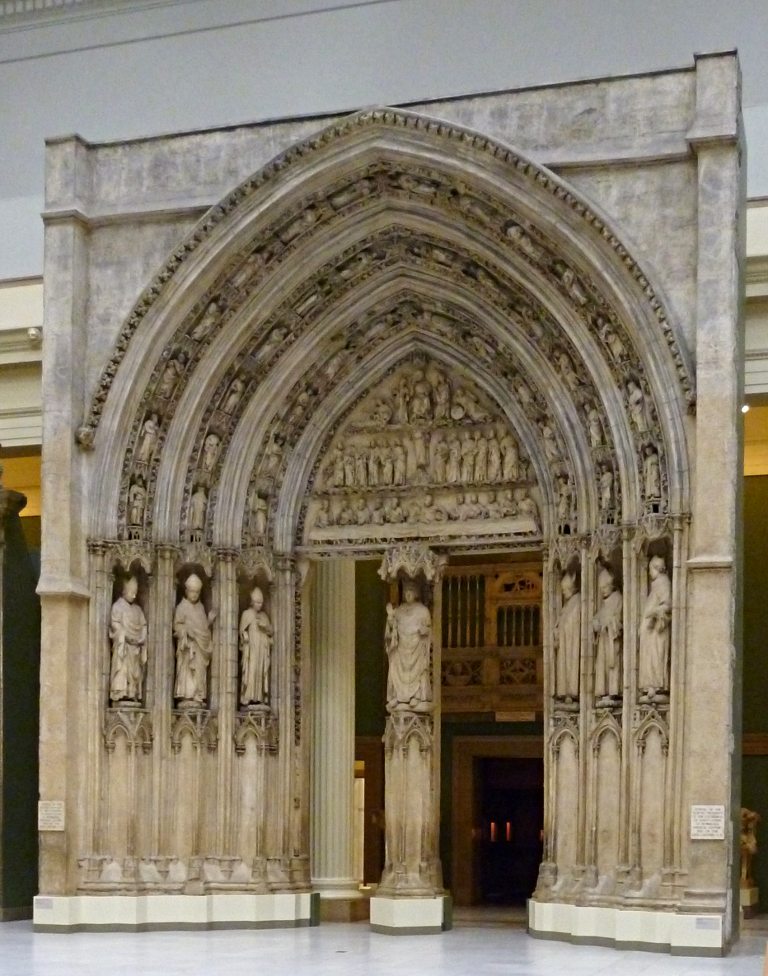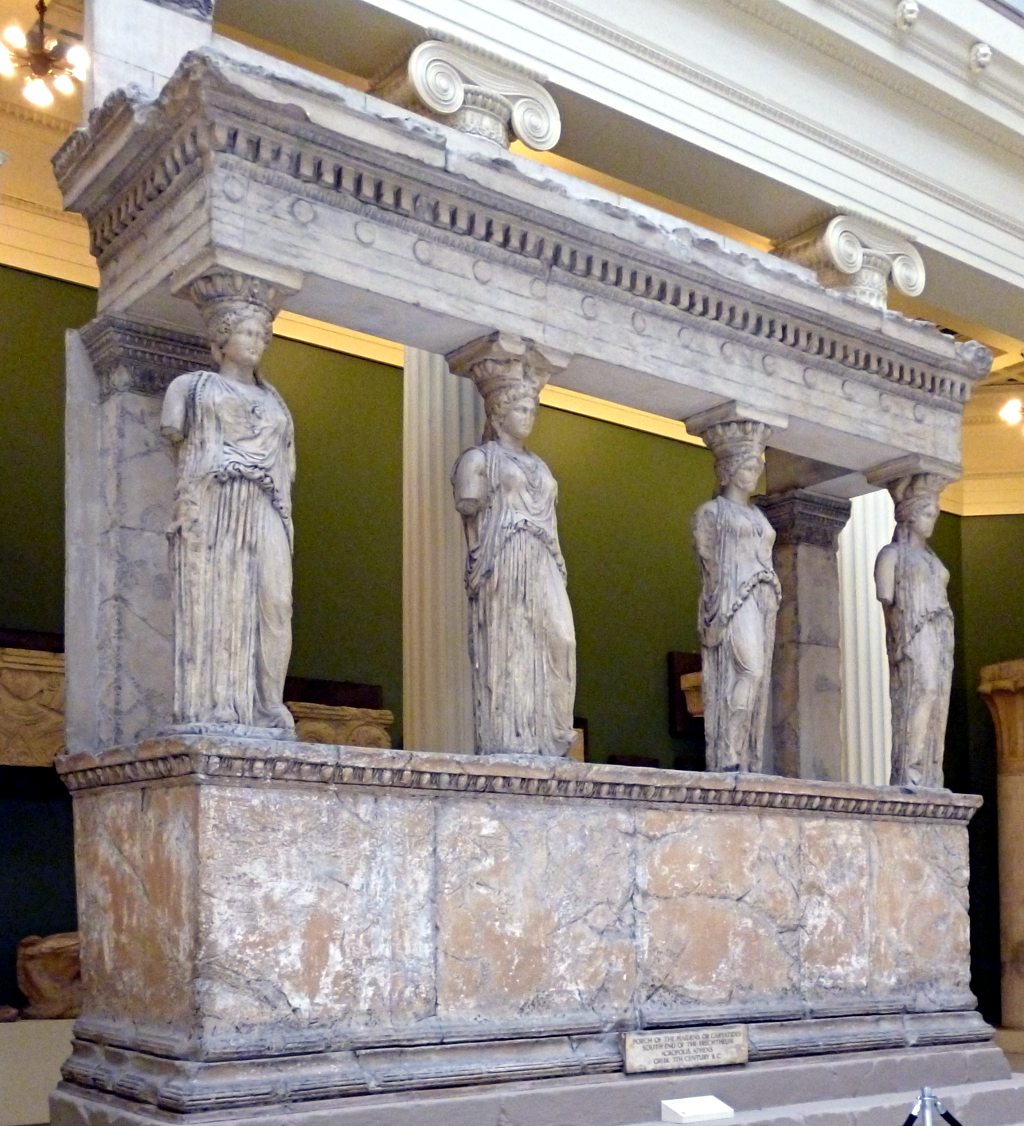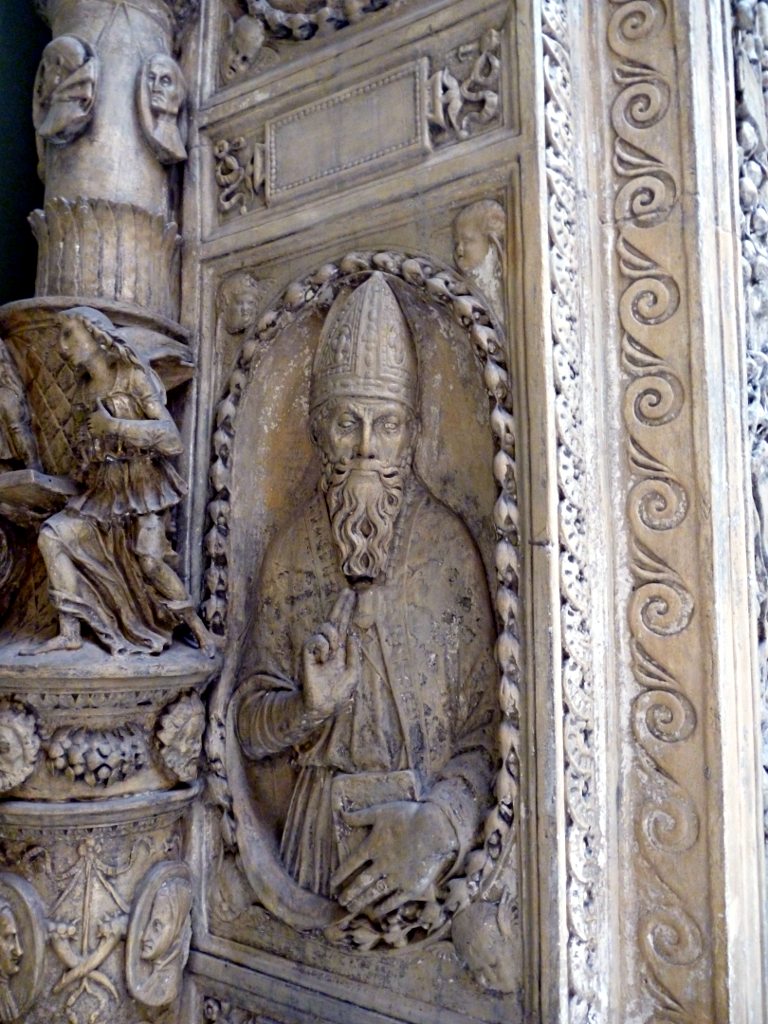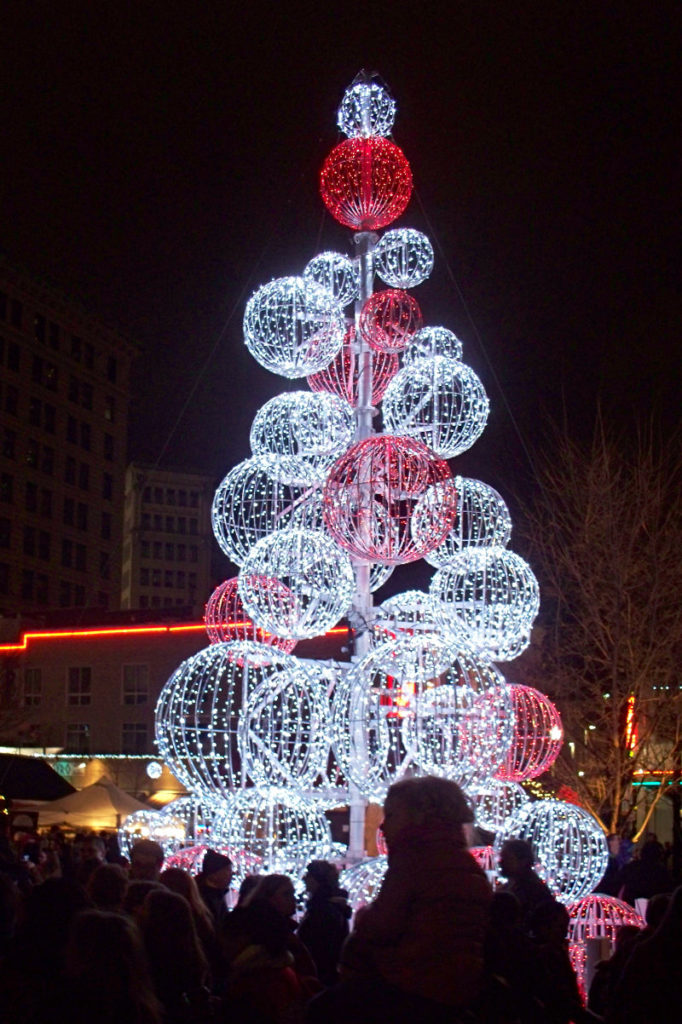
It would be hard to explain Light-Up Night to an out-of-towner. The abstract idea of a night when Christmas lights are turned on for the season is not hard to convey, but no words could describe the seething mass of cheerful humanity that gathers downtown, stuffing trolleys like rolling sardine cans and tying up traffic for hours. It is a night when every good Pittsburgher feels obliged to pay his respects to the Golden Triangle. There are bands, orchestras, choirs, street performers, multiple fireworks displays, lights, ice skating, and even a few random acts of kindness. Every year it’s a bigger deal than last year.
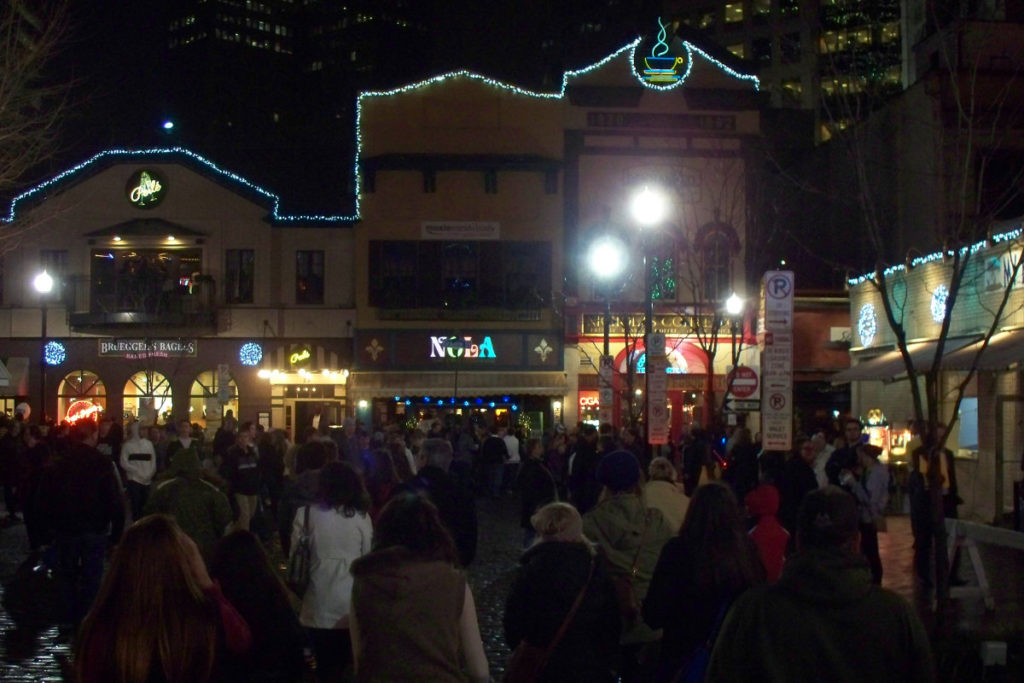
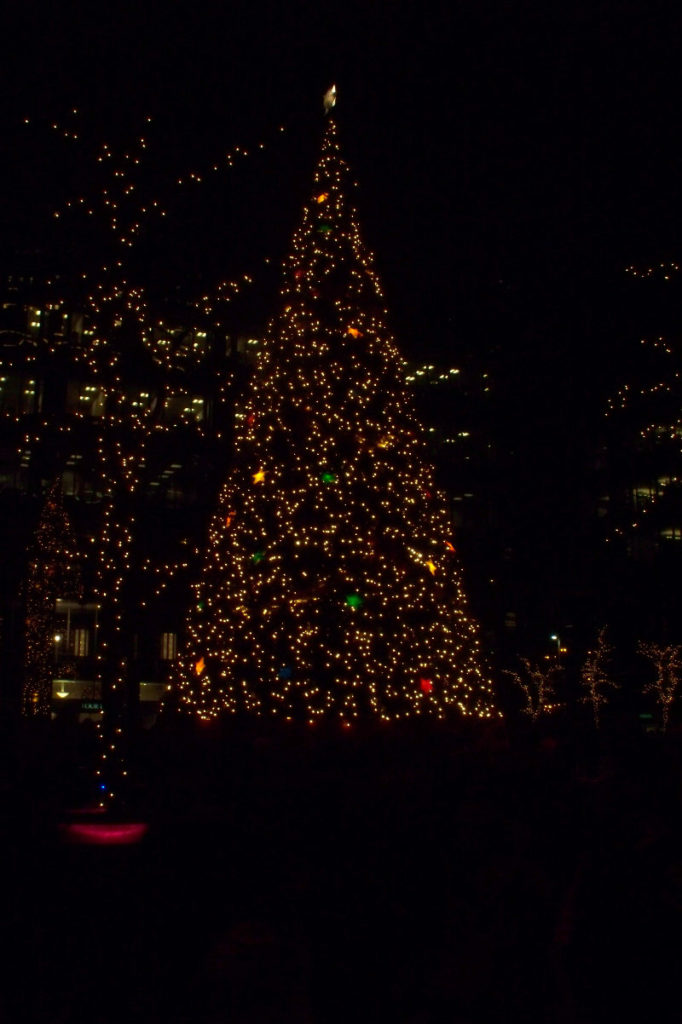
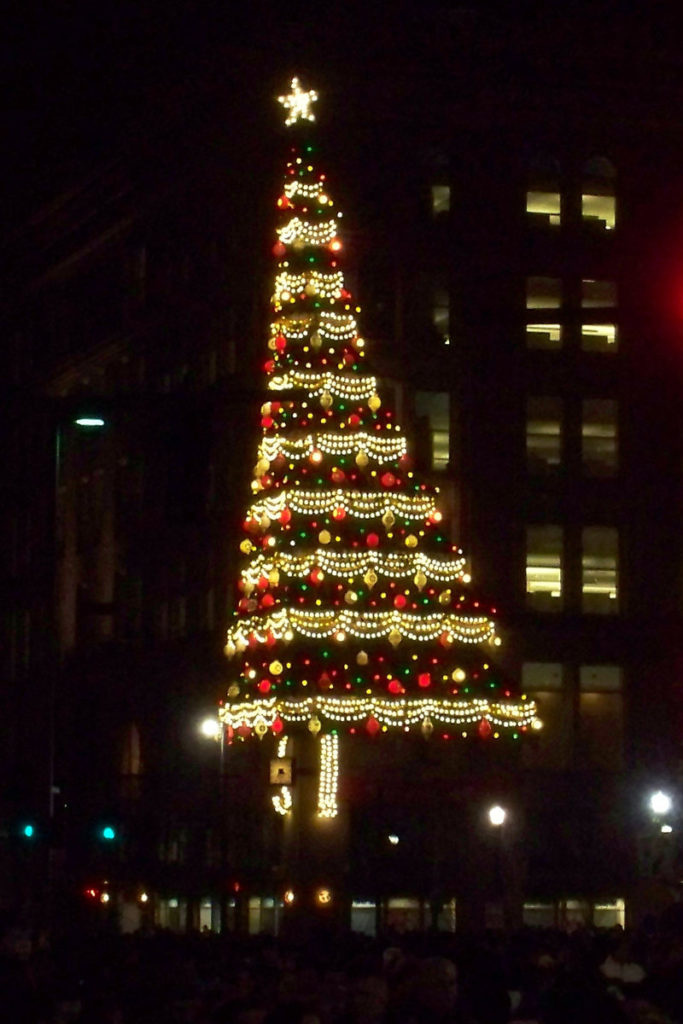
The Horne’s Christmas tree, above, is a tradition that predates Light-Up Night by decades. The Horne’s department store is gone, but the owners of the building still graciously allow us to admire the famous tree that takes up a whole corner of what used to be our second-largest department store.

